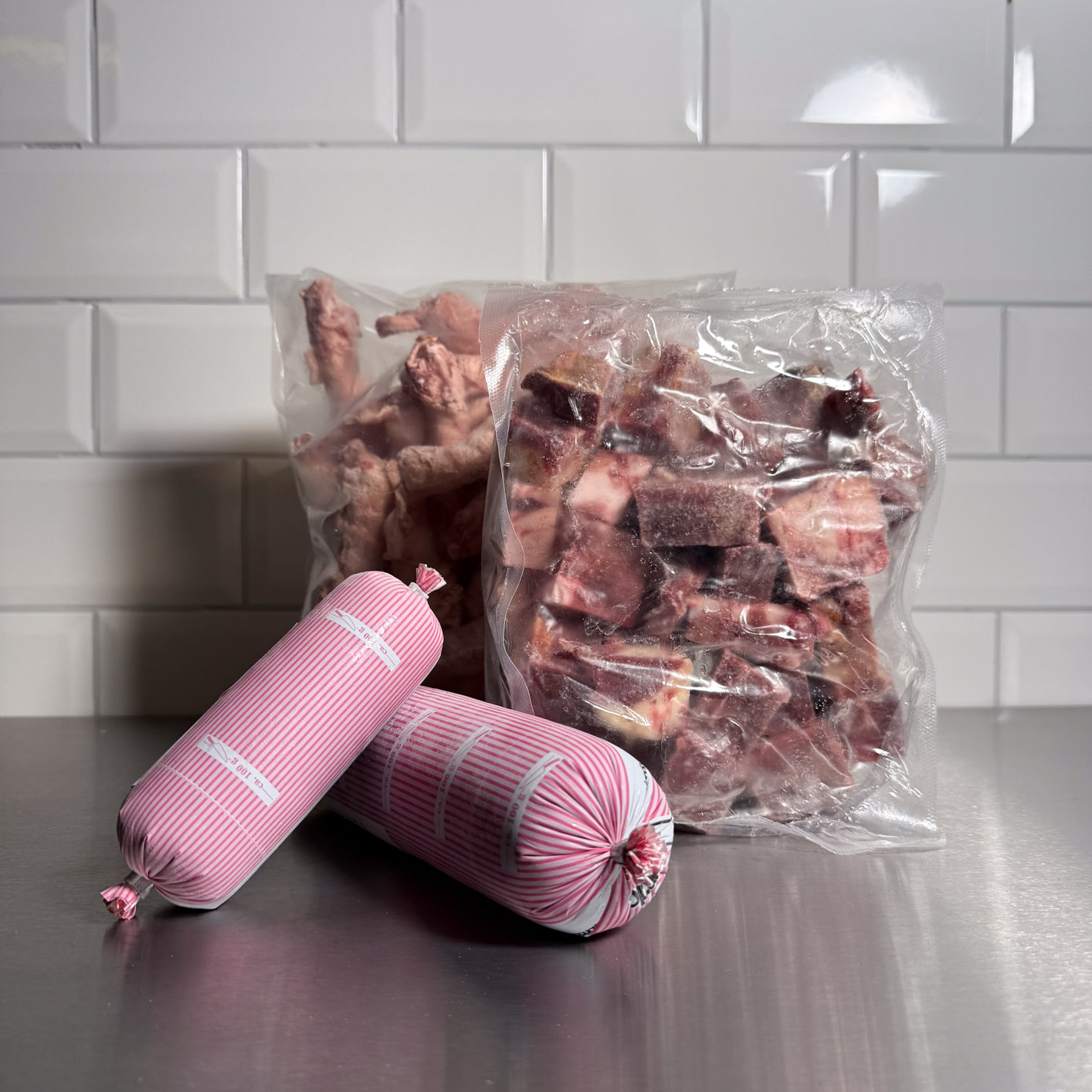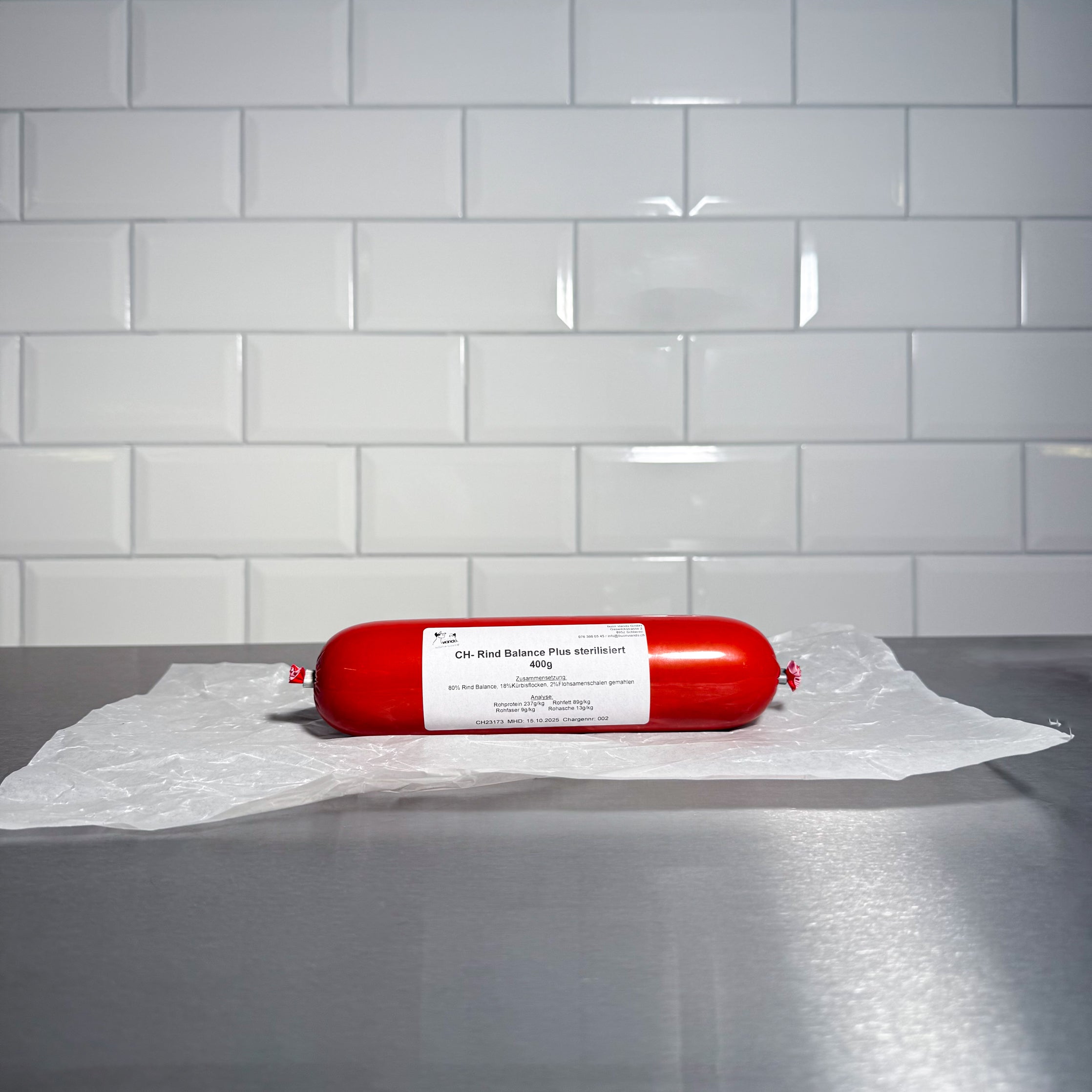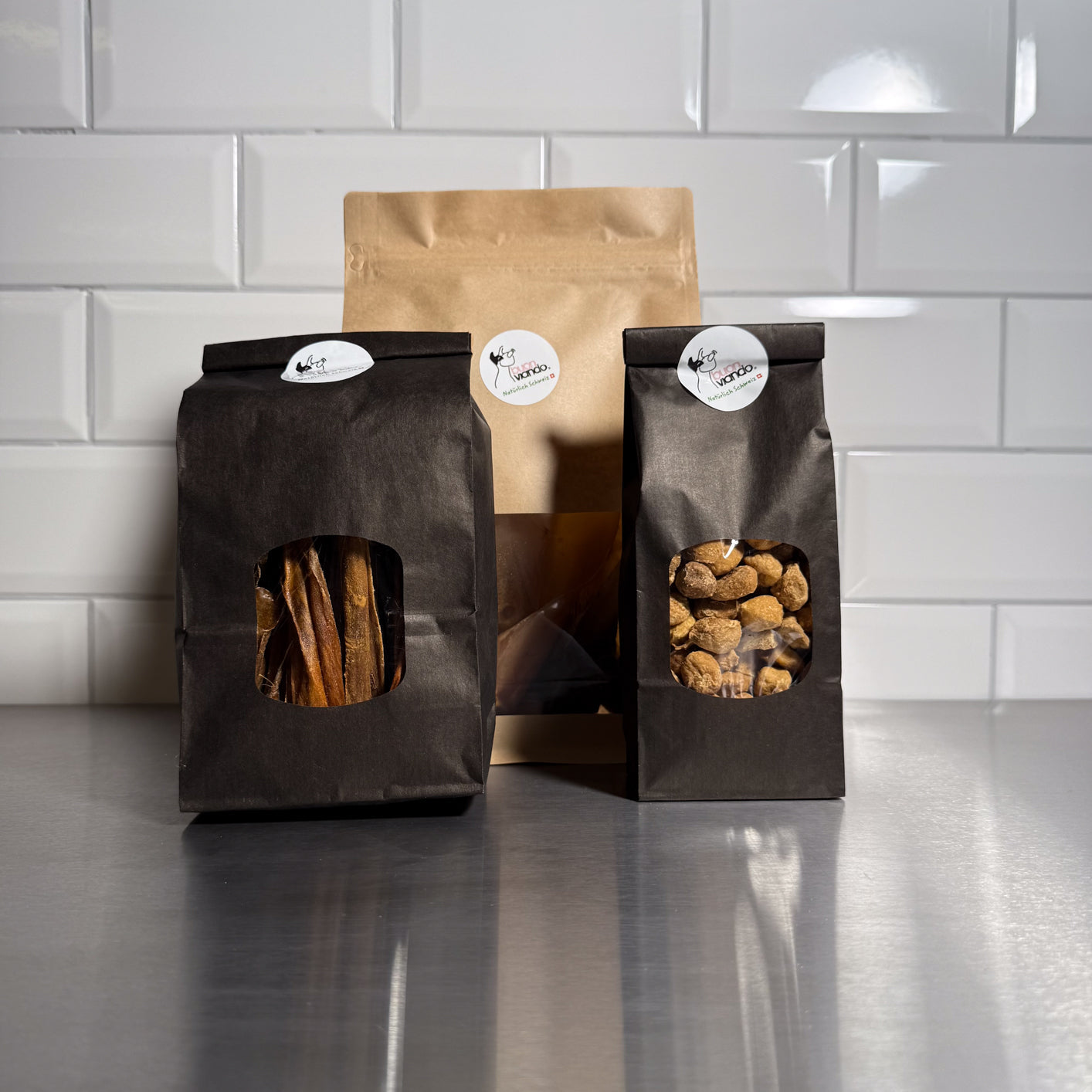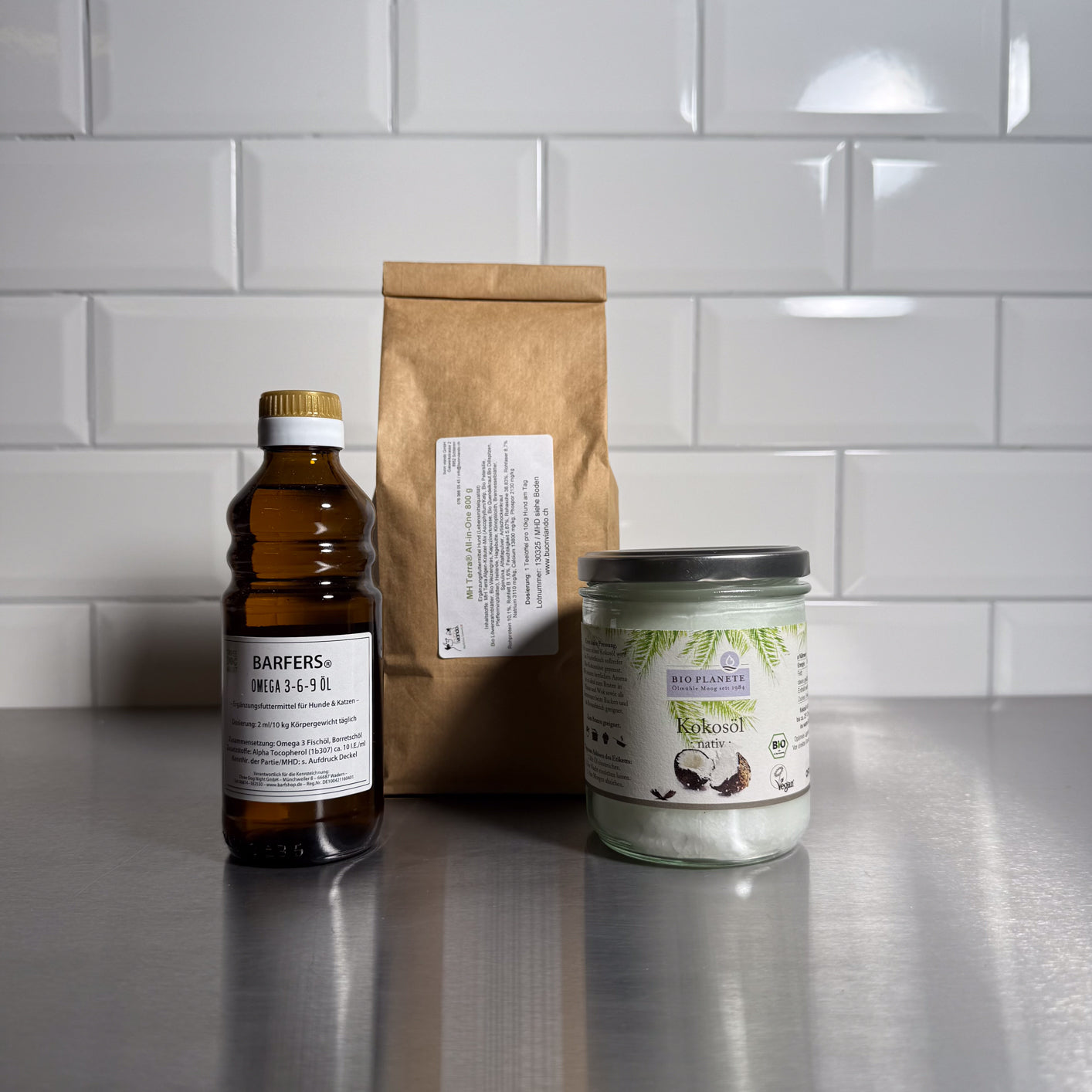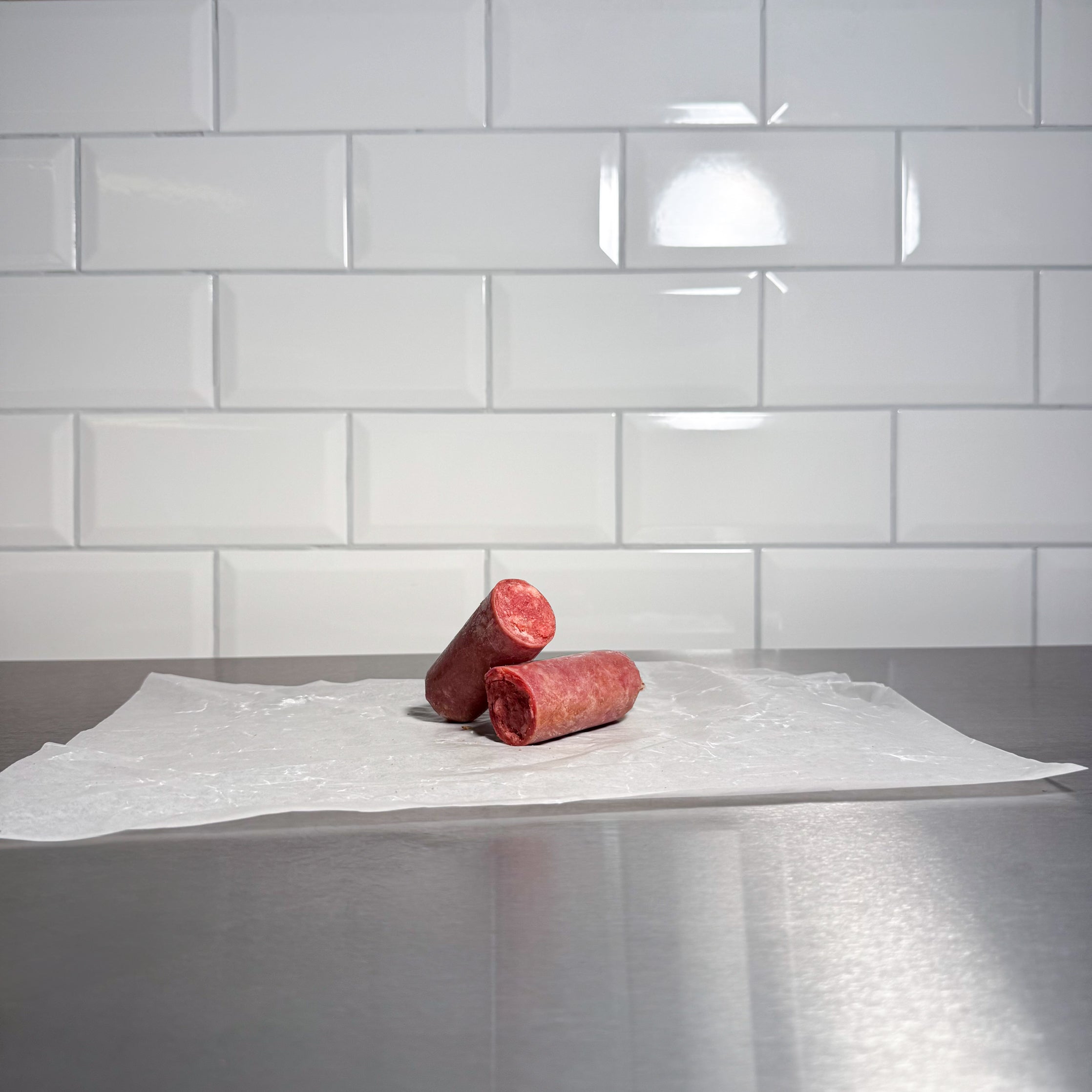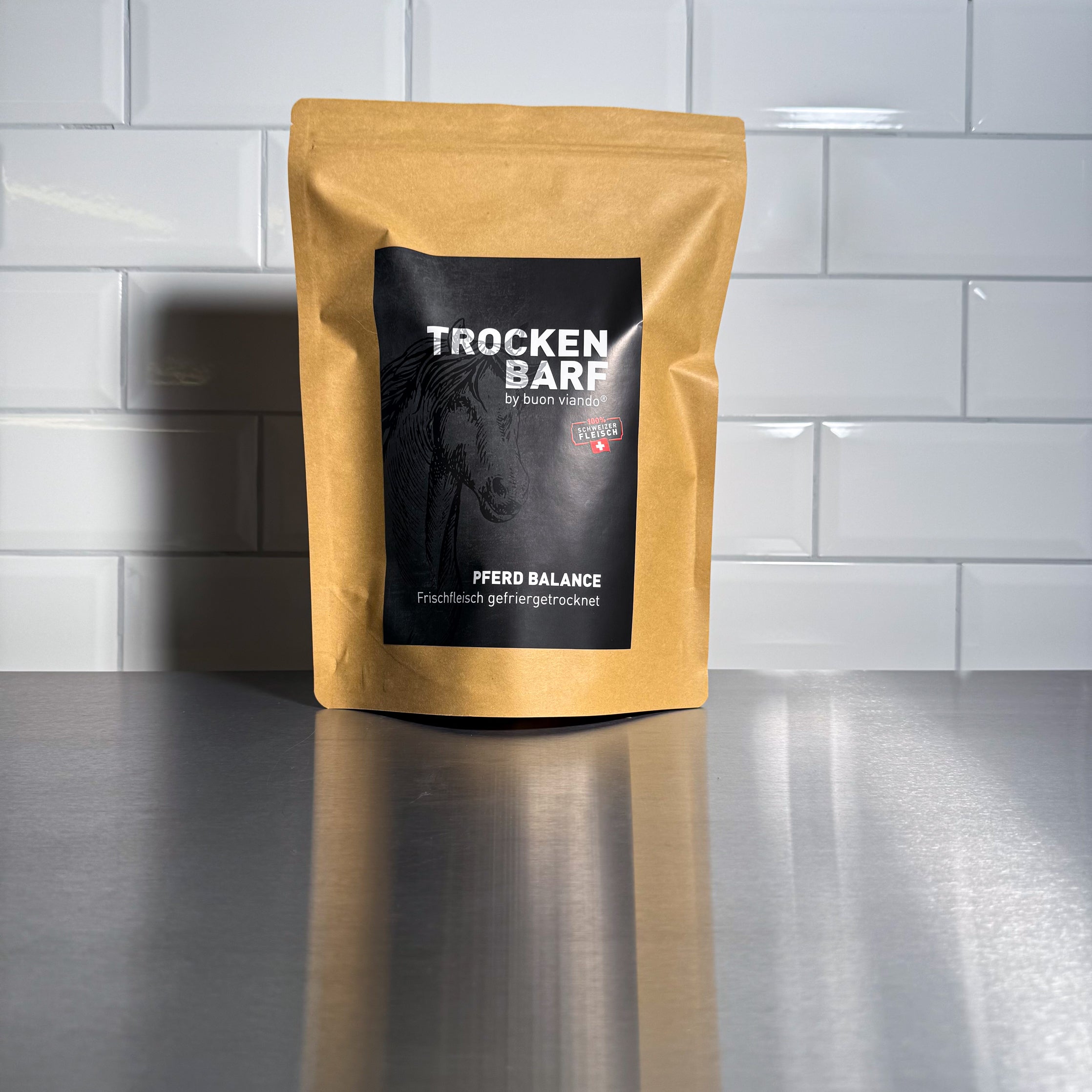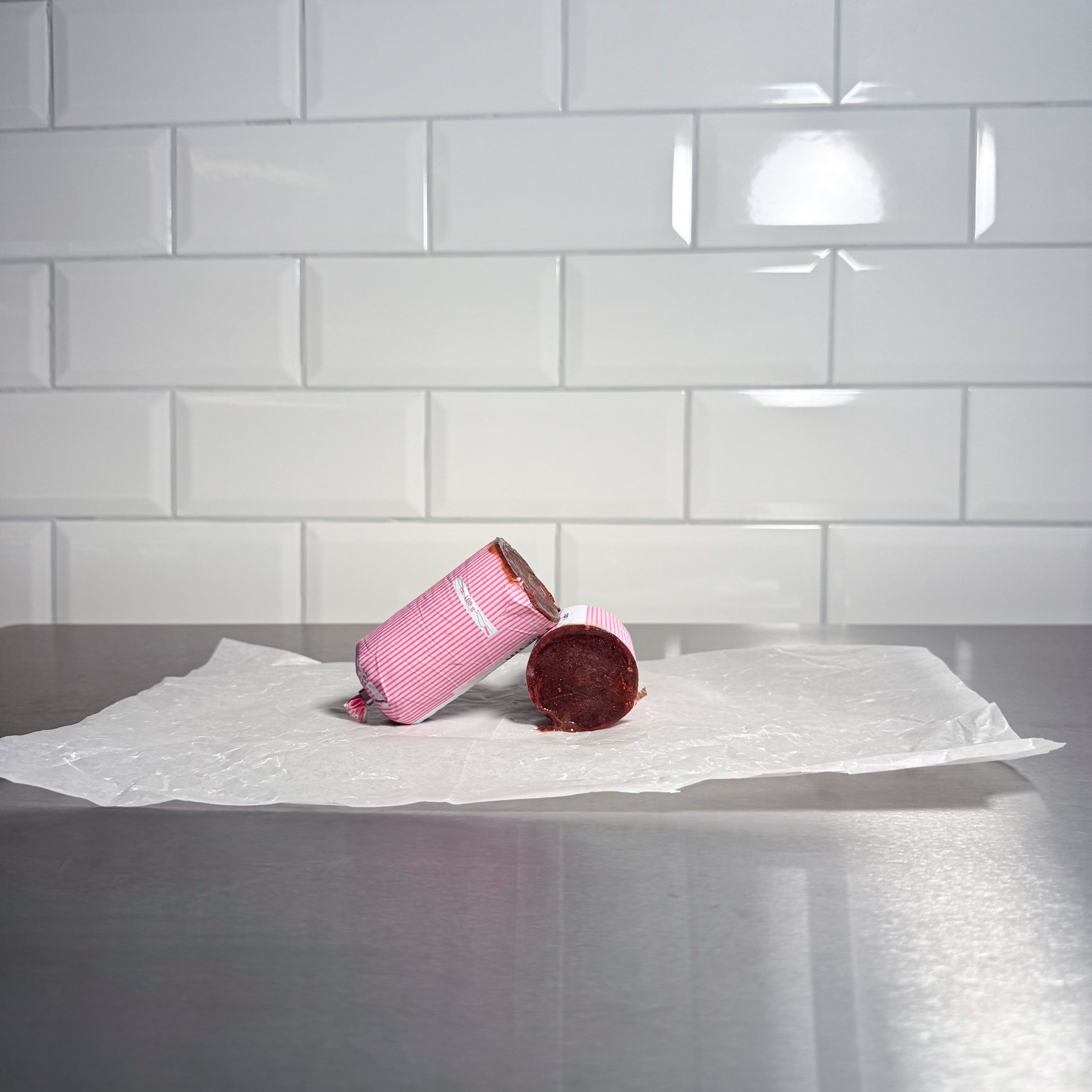The Truth About Organ Meat in Raw Feeding
Offal? Many dog owners turn up their noses at it. They're considered slimy, have a strong smell, and are often labeled as inferior. But that's a fatal misconception! Organ meat is a true nutrient bomb and essential for a balanced raw feed diet. Why? We'll explain now.
Offal as a Natural Part of the Prey
If you look at the diet of wild carnivores like wolves, you'll notice: They don't just eat part of their prey—they consume it whole! And what is eaten first? Exactly, the organ meat! Because it contains highly concentrated vitamins, minerals, and trace elements that aren't found in sufficient quantities in pure muscle meat.
In a natural prey animal, organ meat makes up about 10-15% of the total weight. Therefore, a balanced raw feed diet should also take this proportion into account.
Which organ meats are particularly important?
Not all organs are equally valuable. Some contain particularly high levels of essential nutrients, others less. Here's an overview:
- Liver (30-40% of the offal portion)
Vitamin A, copper, B vitamins, iron, selenium – a true nutritional bomb!
- Kidney
High in sodium, selenium, biotin, copper, B vitamins - Spleen
Rich in iron, potassium, and phosphorus
- Heart
Actually considered muscle meat, but rich in taurine
- Lungs
Lean, but a source of taurine for cats
So you don't have to worry about the right ingredients, we developed our offal sausages in beef and chicken. They contain all the important organs in optimal balance, making it particularly easy for you to provide your dog with the nutrition they need.
Aren't offal organs for detoxification?
A widespread myth states that offal such as the liver and kidneys are full of toxins. However, this is false! These organs are not used to store toxins, but rather to excrete them. More problematic are drug residues and environmental toxins, which can accumulate in an animal's fatty tissue.
Solution: Buy meat from species-appropriate husbandry or game meat!
How much offal does my dog need?
The rule of thumb is: About 15% of the animal portion in a BARF diet should consist of offal.
As already mentioned, liver ideally makes up around 30% of this – the remaining portion can be easily supplemented with heart.
Unsure about how to divide it? No problem! In our BARF calculator, you'll find the option for feeding by individual components. There, the appropriate proportion of liver and heart is automatically calculated for you – without any tedious calculations.
But be careful: Too many offal, especially liver, can quickly lead to diarrhea. An excess of vitamin A should not be underestimated.
If your dog is sensitive, you can simply divide the offal over several days. This will make it easier to tolerate.
Help! My dog won't eat offal!
Offal can be unfamiliar to dogs. If your four-legged friend rejects them, you can try the following:
1. Lightly fry or scald in boiling water
2. Mix the ground meat into the food
3. Combine with a particularly tasty food (e.g., tripe)
Replacing offal – is that possible?
If your dog absolutely doesn't like or tolerates offal, the missing nutrients must be replaced:
- Vitamin A: Cod liver oil
- B vitamins: Vitamin complex, egg yolk
- Copper & manganese: Seafood, herbs
- Iron: Blood meal
But be careful! Natural sources are better than synthetic additives. If you're unsure, have a nutritionist review your feeding plan!
Conclusion: No balanced BARF without offal!
Offal is not an inferior waste product, but essential for a natural diet. Those who forgo it risk long-term nutrient deficiencies. And let's be honest: If even wolves instinctively reach for the innards first, then they must be delivering something crucial!

